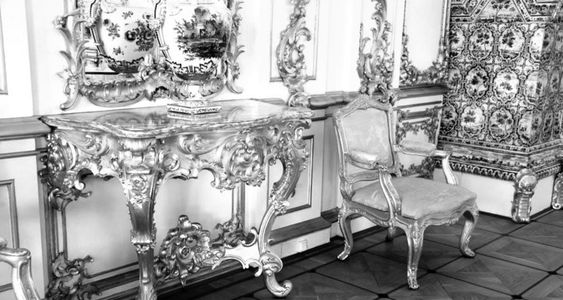As you explore the opulent halls of the Winter Palace in St. Petersburg, you cannot help but marvel at the exquisite furnishings that adorn each room. These masterpieces of 18th-century design, known as Catherine the Great Furniture, bear the unmistakable influence of one of Russia’s most powerful rulers: Catherine the Great. During her reign from 1762 to 1796, Catherine transformed Russian furniture design, ushering in an era of unparalleled luxury and craftsmanship. Her passion for the arts and her strategic patronage of skilled artisans left an indelible mark on the world of interior design. In this article, you will discover how Catherine’s vision shaped the aesthetics of an entire era and continues to inspire designers to this day.
Table of Contents
Catherine the Great’s Life and Influence as Empress of Russia
Catherine the Great’s reign as Empress of Russia from 1762 to 1796 marked a golden age of expansion, modernization, and cultural flourishing. Her influence extended far beyond politics, shaping the arts, architecture, and notably, furniture design. Catherine the Great’s furniture preferences reflected her vision for a more sophisticated and European-influenced Russia.
Rise to Power and Cultural Ambitions
Born Princess Sophie of Anhalt-Zerbst, Catherine’s ascension to the Russian throne was marked by political acumen and personal determination. Upon becoming Empress, she embarked on a mission to transform Russia into a leading European power, militarily, politically, and culturally.
Patronage of the Arts and Craftsmanship
Catherine the Great’s furniture commissions played a crucial role in her cultural agenda. She invited master craftsmen from across Europe to Russia, establishing workshops that produced exquisite pieces blending Russian traditions with Western European styles. The Empress’s personal taste for opulence and grandeur is evident in Catherine the Great’s furniture collections, which often featured gilded ornamentation, intricate carvings, and luxurious upholstery.
Legacy in Design
The influence of Catherine the Greats furniture choices extended well beyond her reign, setting standards for Russian aristocratic tastes for generations to come. Her patronage fostered a uniquely Russian interpretation of Neoclassicism, which can still be admired in the grand palaces and museums of St. Petersburg today.
The Grandeur of Catherine the Great’s Furniture

Catherine the Great’s furniture exemplifies the opulence and sophistication of 18th-century Russian imperial design. Her reign marked a golden age of furniture craftsmanship, blending European influences with distinctly Russian elements to create a unique and lavish style.
Exquisite Materials and Craftsmanship
Catherine the Great’s furniture showcased the finest materials available. Exotic woods like mahogany and rosewood were often inlaid with precious stones, mother-of-pearl, and gilt bronze ornaments. Master craftsmen employed intricate techniques such as marquetry and ormolu to produce pieces of unparalleled beauty and complexity.
Fusion of Styles
The furniture of Catherine the Great’s era reflected a harmonious blend of Rococo, Neoclassical, and Russian folk motifs. This eclectic mix resulted in pieces that were both elegant and uniquely Russian. Ornate carvings, sweeping curves, and symmetrical designs coexisted in perfect balance, epitomizing the empress’s refined taste.
Functional Artistry
While undeniably luxurious, Catherine the Greats furniture also served practical purposes. From elaborately decorated writing desks to sumptuous seating arrangements, each piece was designed to be both beautiful and functional. This marriage of form and function became a hallmark of Russian imperial design, influencing furniture makers for generations to come.
Key Design Elements of Catherine the Great Furniture
Catherine the Great’s furniture designs were characterized by opulence, elegance, and a fusion of European and Russian styles. Her influence on 18th-century furniture design was profound, leaving an indelible mark on the decorative arts of the period.
Neoclassical Influence
Catherine the Great’s furniture often incorporated neoclassical elements, reflecting her admiration for ancient Greek and Roman art. You’ll notice clean lines, symmetrical forms, and classical motifs such as laurel wreaths, urns, and acanthus leaves adorning many pieces from this era.
Luxurious Materials
Catherine the Great furniture typically featured lavish materials. Exotic woods like mahogany and rosewood were commonly used, often inlaid with intricate marquetry designs. Gilded bronze ornaments, known as ormolu, added a touch of opulence to many pieces.
Russian Craftsmanship
While influenced by European styles, Catherine the Greats furniture also showcased Russian craftsmanship. Skilled artisans incorporated traditional Russian techniques, such as painted lacquer work and intricate carving, creating a unique blend of Western and Eastern aesthetics.
Functional Elegance
Despite their ornate appearance, pieces from the Catherine the Great furniture collection were designed with functionality in mind. Writing desks, secretaires, and commodes often featured clever compartments and mechanisms, marrying practicality with beauty.
Where to See Catherine the Great’s Furniture Collections
If you’re eager to admire Catherine the Great’s furniture in person, several world-renowned museums house impressive collections. These exhibitions offer a unique opportunity to appreciate the craftsmanship and opulence of 18th-century Russian design.
The Hermitage Museum, St. Petersburg
The Hermitage Museum, once Catherine the Great’s winter residence, is the premier destination for viewing her furniture collection. Here, you’ll find an extensive array of Catherine the Great’s furniture, including ornate desks, gilded chairs, and intricately carved cabinets. The museum’s State Rooms showcase the empress’s taste for luxury and her passion for French and Italian design.

Catherine Palace, Tsarskoye Selo
Just outside St. Petersburg, the Catherine Palace houses another significant collection of Catherine the Greats furniture. The famous Amber Room, reconstructed to its original glory, exemplifies the extravagant style favored by the empress. As you tour the palace, you’ll encounter numerous pieces that once graced Catherine’s private chambers and state rooms.
Metropolitan Museum of Art, New York
For those unable to visit Russia, the Metropolitan Museum of Art in New York features select pieces from Catherine the Great’s era. While not as extensive as the Russian collections, these exhibits offer a glimpse into the refined tastes and artistic influences of 18th-century Russian royalty.
Catherine the Great Furniture: FAQS
What defines Catherine the Great’s furniture style?
Catherine the Great’s furniture is characterized by its opulent and grandiose design, reflecting the Empress’s taste for luxury and her desire to modernize Russia. The style combines elements of Baroque, Rococo, and Neoclassicism, featuring intricate carvings, gilded accents, and lavish materials. Catherine the Great furniture often showcases exquisite craftsmanship, with pieces adorned in rich fabrics, inlaid with precious stones, and embellished with bronze ornaments.
Where can I see examples of Catherine the Greats furniture?
You can view authentic pieces of Catherine the Great furniture in several Russian museums and palaces. The Hermitage Museum in St. Petersburg houses an extensive collection, including items from her personal chambers. The Catherine Palace in Tsarskoye Selo also displays original furnishings from her reign. For those unable to visit Russia, some international museums occasionally feature exhibitions of 18th-century Russian decorative arts, including furniture from Catherine’s era.
How has Catherine the Great Furniture influenced modern design?
The influence of Catherine the Great’s furniture style extends beyond its historical context. Modern designers often draw inspiration from the grandeur and attention to detail found in these pieces. Elements such as gilded accents, intricate carvings, and luxurious upholstery continue to appear in contemporary furniture designs, particularly in high-end and luxury markets. The enduring appeal of Catherine the Great furniture lies in its ability to convey a sense of opulence and sophistication that remains desirable in interior design today.
Conclusion
As you’ve seen, Catherine the Great’s influence on 18th century furniture design was profound and far-reaching. Her passion for the arts and commitment to cultural development transformed Russian decorative styles. By importing European craftsmen and blending their techniques with traditional Russian motifs, she created a unique aesthetic that came to define the era. The furniture produced under her patronage continues to be highly prized by collectors and museums worldwide. Catherine’s legacy in the decorative arts serves as a testament to her vision as a ruler and her understanding of how material culture could shape a nation’s identity. Her impact on furniture design remains an integral part of her enduring historical significance.
See Also: Join Geekzilla Tio Geek for All Things Tech, Sci-Fi, and Fantasy





